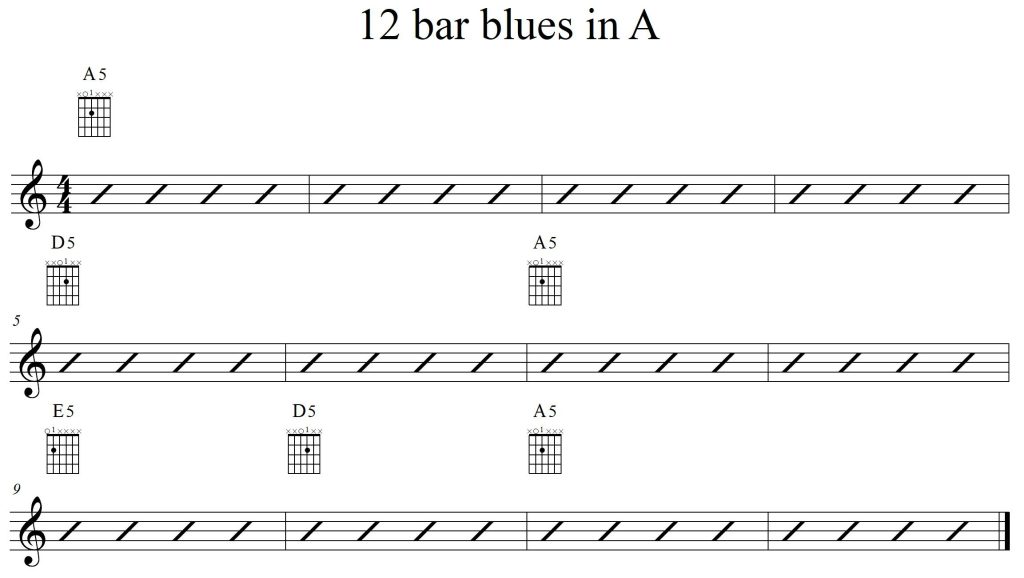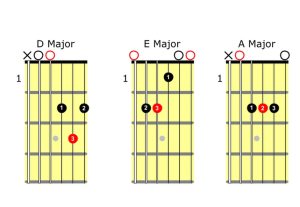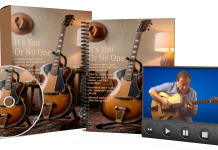This post may contain affiliate links. As an Amazon associate, Google associate as well as associate for other programs, Guitar & Music Institute may earn commissions from qualifying purchases.
 Are you ready to embark on a musical journey that will take you deep into the heart and soul of the blues? Learning to play the blues on guitar is a rewarding experience that can open up a world of musical possibilities. Whether you’re a beginner or have some experience with the guitar, mastering the basics of playing the blues can set you on the path to becoming a skilled blues guitarist.
Are you ready to embark on a musical journey that will take you deep into the heart and soul of the blues? Learning to play the blues on guitar is a rewarding experience that can open up a world of musical possibilities. Whether you’re a beginner or have some experience with the guitar, mastering the basics of playing the blues can set you on the path to becoming a skilled blues guitarist.
Learning to play the blues can be a challenging process, but with the right guidance and resources, you can make significant progress in a short amount of time. That’s where blues guitar lessons come in. A comprehensive beginner’s guide to playing the blues can provide you with a solid foundation, equip you with essential techniques, and help you develop your own unique blues style.
Key Takeaways:
- Learning to play the blues on guitar requires a systematic approach.
- A comprehensive course can save you time and provide you with the tools necessary to master the basics.
- Steve Krenz is a professional guitarist and instructor who offers a blues guitar course for beginners.
- Building a strong foundation in blues notes, chords, and progressions is essential.
- Power chords and the 12-bar blues progression are key elements of blues guitar.
The Instructor and Course Content
When it comes to learning blues guitar, having the right instructor can make all the difference. That’s why Steve Krenz, a professional guitarist who has performed with Grammy-winning artists, is the perfect guide for your blues guitar journey. With his practical and easy-to-understand teaching style, Steve ensures that you grasp essential blues guitar techniques and concepts with ease.
The blues guitar course, crafted by Steve Krenz, offers a comprehensive learning experience packed with valuable content. The course includes 6 DVDs, providing over 8 hours of practical instruction that covers a wide range of topics. From bends and pull-offs to palm muting and slide playing, Steve’s course teaches you essential blues guitar techniques that will elevate your playing to the next level.
But it doesn’t stop there! The course also includes a jam-along DVD and CD, featuring over 20 songs for you to practice and hone your skills. You’ll also gain access to in-depth interviews with legendary blues guitarists, offering valuable insights and inspiration. To supplement your learning, a downloadable book is included, allowing you to review and reinforce what you’ve learned.
Additionally, the course provides access to an online support community, where you can connect with fellow learners and receive guidance from experienced players. This community serves as a valuable resource, offering a platform for collaboration, sharing experiences, and seeking answers to any questions you may have along the way.
With Steve Krenz’s blues guitar course, you have everything you need to embark on a fulfilling blues guitar journey. Are you ready to dive into the world of essential blues guitar techniques and unlock your full potential as a guitarist?
Building a Strong Foundation
To play the blues with confidence, it’s important to have a strong foundation. This includes understanding blues notes, blues scales, pentatonic scales, and blues chord progressions. The course will teach you the notes, chords, and form that make up the blues, and you’ll learn how to incorporate these elements into your playing. By mastering these fundamental aspects of blues guitar, you’ll be able to create soulful and expressive blues music.
Beginner Blues Guitar Chords
If you’re just starting out on your blues guitar journey, mastering the basic chords is essential. A popular chord progression in blues music is the 12-bar blues, which forms the foundation of many blues songs. One of the simplest ways to play the 12-bar blues is by using power chords.
Power chords are chords that consist of the root note and the 5th, omitting the 3rd that determines whether a chord is major or minor. These chords have a raw and powerful sound that suits the blues genre perfectly.

In a basic 12-bar blues progression in the key of A, you would play 4 bars of A power chord, followed by 2 bars of D power chord and then 2 bars of A power chord again. Finally, you would play 1 bar of E power chord, followed by 1 bar of D power chord and then 2 bars of A power chord to complete the progression.
This chord progression creates a familiar and soulful sound that is characteristic of the blues. It provides the structure for improvisation and allows you to explore different melodies and solos.
By practicing these power chords and the 12-bar blues progression, you’ll develop a strong foundation in blues guitar playing. With time and practice, you’ll be able to create your own variations and add your personal touch to this classic form of music.
Adding Major Chords

In addition to power chords, you can also incorporate major chords into your blues playing. Some common major chords used in blues are the A major, D major, and E major chords. These major chords can add a brighter and more colorful sound to your blues progressions.
The A major chord is formed by placing your first finger on the 2nd fret of the D string, your second finger on the 2nd fret of the G string, and your third finger on the 2nd fret of the B string.
To play the D major chord, place your first finger on the 2nd fret of the G string, your second finger on the 2nd fret of the high E string, and your third finger on the 3rd fret of the B string.
The E major chord is played by placing your first finger on the 1st fret of the G string, your second finger on the 2nd fret of the A string, and your third finger on the 2nd fret of the D string.
By incorporating these major chords into your blues progressions, you’ll have more options for creating interesting and dynamic guitar parts. Experiment with different chord voicings and find what sounds best to you.
Step-by-Step Guide to Blues Guitar Solos
Even if you’re a complete beginner, it’s easy to learn how to play blues guitar solos. The first step is to learn the minor pentatonic scale, which is a versatile scale used in all styles of guitar playing, including blues. This scale consists of five notes that can be played in different positions on the guitar neck.

The blues scale is derived from the minor pentatonic scale with the addition of the flat 5th. This additional note gives the scale a distinct bluesy sound that is essential for authentic blues solos.
To master blues soloing techniques, it’s important to practice with blues backing tracks. These tracks provide a musical context for your solos and help you develop your improvisational skills. Play along with the backing tracks and experiment with techniques like sliding into notes, hammer-ons and pull-offs, bending strings, and using vibrato. These techniques add expression and emotion to your solos, allowing you to truly capture the essence of blues music.

Remember, learning how to play blues guitar solos is a journey. It takes practice, patience, and a willingness to experiment. Over time, you’ll develop your own unique style and become proficient in the art of blues soloing. So grab your guitar, turn on some blues backing tracks, and let your soulful guitar solos fill the air. Happy playing!
Changing Keys for Blues Progressions
Blues progressions have the flexibility to be played in different keys, allowing for a diverse musical experience. As a blues guitarist, it’s important to be able to adjust your soloing to match the key of the progression. By doing so, you can seamlessly integrate your solos into any blues song, regardless of its key.
When faced with a new key, the first step is to identify the key in which the blues progression is played. Once you determine the key, you can shift the root note of your blues scale to match that key. This allows you to navigate the fingerboard and play the appropriate notes within the scale, creating a harmonious and melodic solo.
“By adjusting your soloing to a new key, you unlock a world of possibilities and expand your musical repertoire.”
For example, let’s say the blues progression is in the key of C. To adjust your soloing, you would shift the root note of your blues scale to the 8th fret on the low E string. From there, you can confidently play the C blues scale, incorporating its unique notes and intervals into your solos.
It’s essential to familiarize yourself with the notes on the low E string, as this is where the root note of your blues scale will often reside. By memorizing the notes on the low E string, you can effortlessly make the necessary adjustments to play in different keys.
Memorizing the Notes on the Low E String
To memorize the notes on the low E string, start by learning the open string notes, which are E, F, F#, G, G#, A. From there, you can apply the pattern of natural notes (A, B, C, D, E, F, G) as you move up the fretboard. This pattern will help you navigate the low E string and identify the notes in any given key.
By being proficient in adjusting your soloing to new keys and memorizing the notes on the low E string, you gain the ability to fluidly play blues solos in any key. This versatility empowers you as a guitarist and enables you to express your musical ideas with confidence.
Continue honing your skills as a blues guitarist by exploring different keys and experimenting with various soloing techniques. With dedication and practice, you can become a master of the blues and captivate audiences with your soulful playing.
Expanding Your Soloing Skills
To take your blues guitar solos to the next level, it’s important to incorporate expressive techniques. These techniques include sliding into notes, using hammer-ons and pull-offs, bending strings, adding vibrato, and using the volume knob to shape the sound. Experiment with these techniques and practice integrating them smoothly into your playing to create solos that truly emulate the human voice.
The expressive soloing techniques mentioned above can greatly enhance your blues guitar playing. Sliding into notes adds a smooth and fluid quality to your solos, creating a sense of movement and emotion. You can slide from one note to another, either ascending or descending, to add a unique flavor to your melodies.

Another technique to explore is using hammer-ons and pull-offs. By quickly tapping or releasing a finger on a higher fret, you can create a seamless transition between notes, producing a legato effect. This adds a dynamic and melodic element to your solos.
Bending strings is yet another expressive technique in blues guitar. By pushing or pulling the string while fretting a note, you can raise or lower its pitch, infusing your solos with soulful and emotional nuances. Bending strings can add tension, release, and dramatic flair to your playing.
Adding vibrato is a technique that involves rapidly fluctuating the pitch of a sustained note. This technique brings life to your solos, emulating the vocal quality and expression of blues singers. Vibrato adds depth and personality to your playing, allowing you to convey a wide range of emotions.
Finally, don’t underestimate the power of the volume knob. Using the volume knob on your guitar can shape the dynamics and intensity of your solos. Experiment with gradually increasing or decreasing the volume to create tension, build-ups, or gentle fade-outs. This technique adds a dynamic range to your playing, capturing the essence of the blues.
The key to mastering these expressive soloing techniques is practice and experimentation. Dedicate time to incorporate these techniques into your improvisation, gradually increasing your control and fluidity. By developing your soloing skills, you can create captivating and soulful blues guitar solos that leave a lasting impression on your audience.
The Influence and Legacy of the Blues
The blues is the genre that started it all and continues to influence music today. As Keith Richards famously said, learning how to play blues guitar is essential for anyone who wants to play rock guitar. The blues serves as the precursor to many other genres and is known for its ability to translate emotion through music. Whether strictly formatted or more improvisational, the blues has a rich history and can be a powerful way for guitarists to express themselves.
“Blues is what I’ve played the most, and I’m still enjoying it. It’s an honest, solid music that just sends a vibe.” – Keith Richards
From its roots in African American communities in the early 20th century, the blues has evolved and influenced countless musicians and styles of music. Its signature rhythmic patterns, use of blue notes, and expressive guitar playing have made the blues a beloved genre across the world.
Blues music has often served as a medium for emotional expression, allowing artists to convey their deepest feelings through their playing. The raw and soulful nature of blues music resonates with listeners, evoking a range of emotions from sadness to joy. Whether it’s the haunting sound of a slide guitar or the heartfelt lyrics of a blues ballad, the blues has a unique ability to touch the hearts of its audience.
Throughout history, the influence of the blues can be heard in various genres, including rock, jazz, country, and soul. Artists like Eric Clapton, Stevie Ray Vaughan, and B.B. King have all credited the blues as a major influence on their musical style. The legacy of the blues can be heard in the riffs, rhythms, and attitudes of modern music.
Whether you’re a beginner learning to play the blues or an experienced musician looking to expand your skills, the rich heritage and timeless appeal of blues music provide endless opportunities for artistic expression.
Can Learning Pentatonic Guitar Scales Help Improve Blues Guitar Playing?
Learning pentatonic guitar scales can greatly benefit blues guitar playing. By mastering these scales, guitarists can improve their improvisation skills, create more dynamic solos, and develop a stronger sense of phrasing and melody. Understanding how to learn pentatonic guitar scales is essential for anyone looking to excel in blues guitar playing.
Conclusion
Learning to play the blues on guitar is an exciting journey that can be made easier and more enjoyable with a comprehensive course. By understanding the fundamentals of blues music, including chords, scales, and techniques, you can start playing soulful and expressive blues guitar. The course mentioned in this article provides a step-by-step guide, with over 8 hours of instruction, a jam-along DVD and CD, and access to a supportive online community.
Whether you’re a complete beginner or have some experience playing guitar, this comprehensive course is designed to help you master the basics of playing the blues. With the guidance of the professional guitarist and instructor Steve Krenz, you’ll learn everything you need to know to start playing blues guitar confidently. From learning the notes, chords, and form that make up the blues, to building a repertoire of ready-to-use riffs, this course covers all the essential aspects of blues guitar playing.
Start your blues guitar journey today and unlock the power of this iconic genre. With a comprehensive course specifically designed for beginners, you’ll have a structured and effective learning experience. So grab your guitar, dive into the world of blues, and let your soulful music take flight.
This post may contain affiliate links. As an Amazon associate, Google associate as well as associate for other programs, Guitar & Music Institute may earn commissions from qualifying purchases.


























